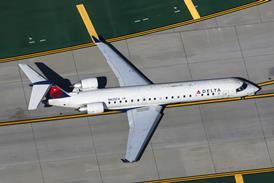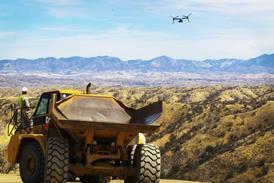BRENDAN SOBIE / WASHINGTON DC
Upset-recovery programme at the centre of investigation
The public hearing on the American Airlines flight 587 crash has developed into a clash between Airbus, the carrier and its pilots' union over what part a specialist upset recovery pilot-training programme may have played in the accident. The Airbus A300-600R crashed in November 2001 near New York Kennedy seconds after the tail fin separated from the aircraft following vigorous rudder movement.
Last week's hearing revealed that American was cautioned about its teaching on pilot-rudder input for roll recovery after an American A300-600R incident over Florida on 12 March, 1997. The pilots used rudder heavily in a stall recovery, overloading the fin, but causing no damage (Flight International, 5-11 March). The carrier says instructors in its advanced aircraft manoeuvring programme (AAMP) upset-recovery training would not have taught the excessive pilot rudder inputs that may have created high lateral aerodynamic loads just before AA587's fin broke off. American's pilots' union, the Allied Pilots Association (APA), insists the pilots performed according to their training and are now pushing for clearer guidance on rudder use.
Investigators are still trying to determine if pilot inputs, an anomaly in the rudder-control system, wake turbulence from a Boeing 747-400 or a combination of these factors led to the tail separation, because the flight data recorder (FDR) shows large rudder pedal movements and proportionate rudder deflection, but does not measure input pressure on the pedals.
The rudder movements occurred as the aircraft passed through wake turbulence from a preceding 747, but the hearing indicates that the inquiry is turning away from wake turbulence as a cause of the fin overload in favour of the sideslip generated by rudder displacement.
During the four-day hearing Airbus directed attention to American's AAMP training. The course, taken by the AA587 pilots in 1997, teaches pilots of all aircraft types upset-recovery procedures, including the use of "co-ordinated rudder" in wake turbulence that results in high angles of attack (AoA). AA587 was not at a high AoA when the fatal upset occurred.
In a letter dated 22 May, 1997, the inquiry revealed, American A300 technical pilot David Tribout asked Airbus to "give us your thoughts" on the AAMP's teaching on the use of rudder to control roll in the event of a wake-turbulence encounter. Tribout called this part of the AAMP course "inaccurate and potentially dangerous" and asked whether "excessive use of rudder at high AoA might cause a spin or snap roll".
Airbus responded on 20 August 1997 with a guidance letter co-signed by Boeing and the US Federal Aviation Administration to American chief pilot Cecil Ewell warning: "The excessive emphasis on the superior effectiveness of the rudder for roll control vis-à-vis aileron and spoilers, in high AoA, is a concern." The letter says yaw dampers and automatic turn co-ordinators that deflect the rudder for balanced flight are adequate for recovery and "the manual application of rudder can defeat its purpose".
In a 12 August, 1998, letter to the NTSB supporting the investigation into the 12 March 1997 incident, Airbus warned: "Large or abrupt usage at high AoA can rapidly lead to large slideslip angles and can lead to rapid loss of controlled flight."
Despite this dialogue, American did not change AAMP, nor did Airbus issue an official advisory about rudder use. The carrier contends AAMP has saved lives and there is no reason to change it.
AA587's co-pilot was previously cited for applying excessive rudder, but American A300 fleet standards manager Delvin Young says there is no evidence the co-pilot did this more than once, insisting he would not have learned it from American.
Source: Flight International























